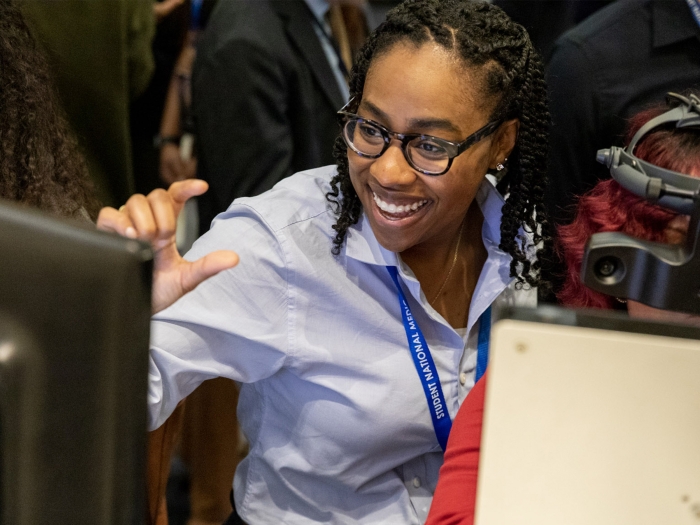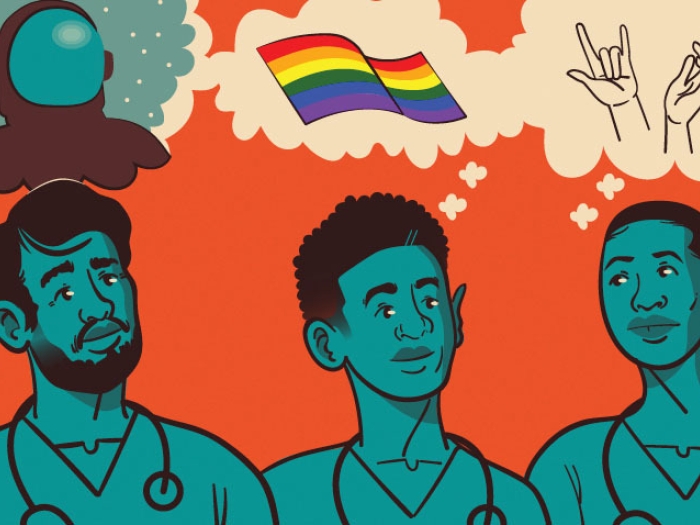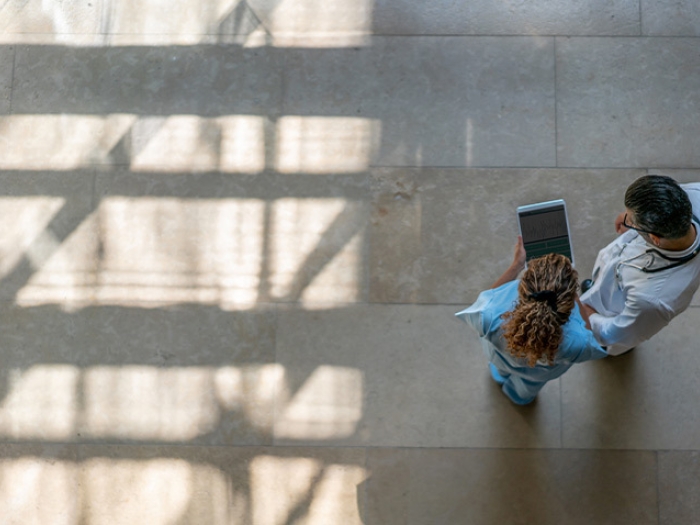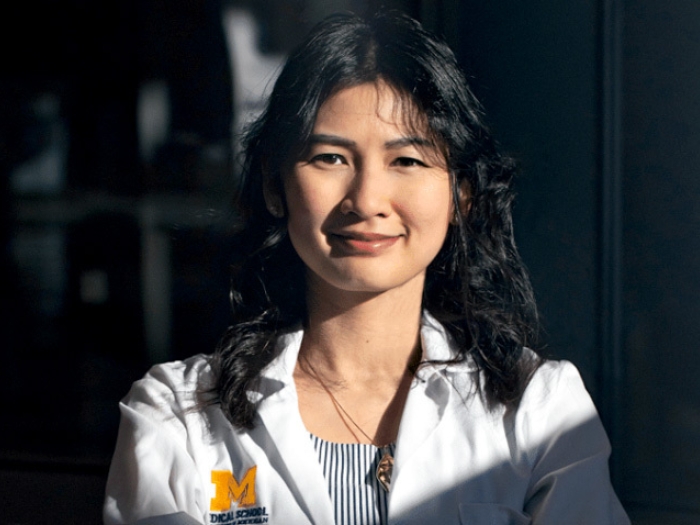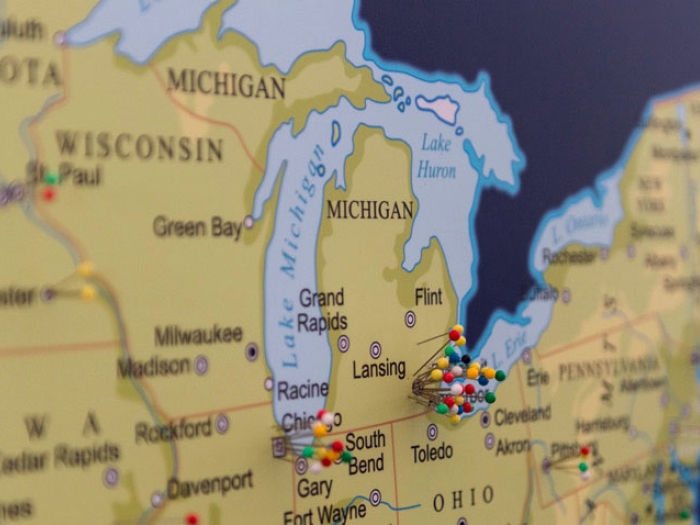A new report taps into national research, interviews with learners and examples of positive action by some schools to help inform suggested changes.
12:00 PM
Author |
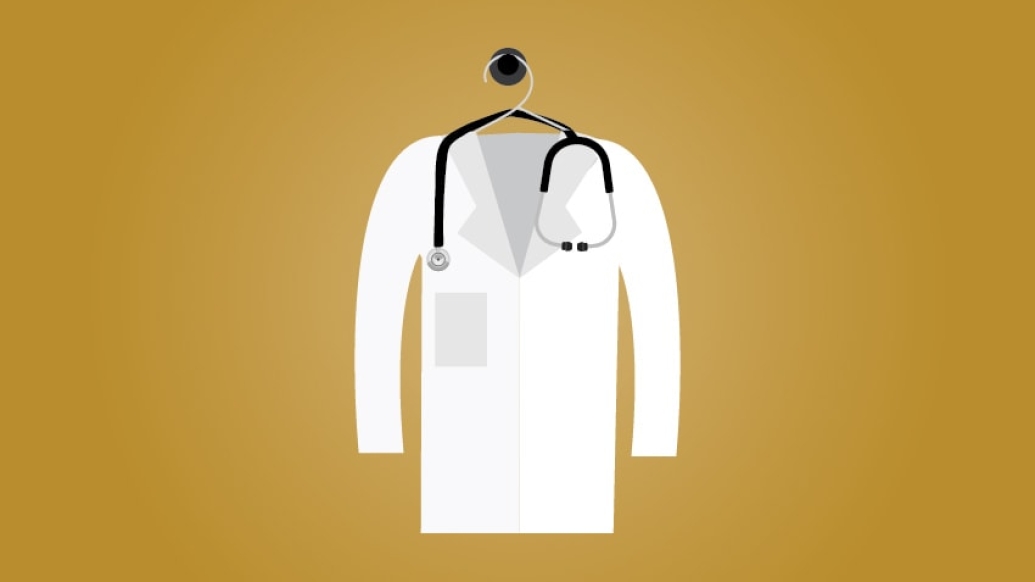
America's medical schools are making progress in efforts to attract, admit and accommodate students with disabilities — though there is more work to be done, a new report concludes.
MORE FROM THE LAB: Subscribe to our weekly newsletter
The report lays out steps medical schools can take to lower the physical, cultural and administrative barriers that keep people with disabilities from seeking a career in medicine.
It outlines, in checklist format, considerations for schools seeking to improve on their practices, based on research, best practices, case law and the experiences of 47 current and former medical students with disabilities. It also highlights the missed opportunities for medical students to learn about disability through a peer and for patients to have doctors who understand their experience.
Co-written by a University of Michigan researcher, the report "Accessibility, Inclusion, and Action in Medical Education: Lived Experiences of Learners and Physicians with Disabilities" is jointly published by the Association of American Medical Colleges (AAMC), a not-for-profit association representing the nation's medical schools and teaching hospitals, and the University of California, San Francisco, School of Medicine.
"I hope this report sparks critical conversations about disability inclusion in medical education and serves as a beacon for students with disabilities who aspire to be physicians but who had thought the barriers were too big to overcome," says Lisa Meeks, Ph.D., who conducted the research while at the UCSF School of Medicine. Meeks is now on the faculty at the U-M Medical School. "I also hope it inspires educators to think broadly about how disability intersects with medicine, including how physicians care for the 1 in 5 patients who have disabilities."
Meeks and co-author Neera Jain, M.S., from the University of Auckland, New Zealand, led a team that reviewed the current research and legal climate around medical students with disabilities. Through an effort called the Lived Experience Project, they found and interviewed medical students and residents who spoke of their own experiences — both positive and negative. The authors conclude that improving access for students with all forms of disability will require a commitment by the medical education community.
AAMC President and CEO Darrell G. Kirch, M.D., agrees. "All stakeholders have a role in enhancing accessibility and inclusion for learners with disabilities," he says. "We hope the report catalyzes discussion and facilitates the sharing of knowledge about disability issues and medical education."
The report also concludes that schools must improve their disability services programs for enrolled students and improve the culture around such students. Meeks and Jain previously wrote a guidebook for health professions schools on this topic, and both have served in disability services positions at top U.S. medical schools.
In recent years, medical schools have made efforts to improve the diversity of their student communities. But those efforts have not necessarily included disability as a type of diversity.Lisa Meeks, Ph.D.
A small but growing number
About 1,500 of today's 89,900 medical students have disclosed a physical, sensory, learning or psychological disability or a chronic health condition to their medical school, according to research. That's about 2.7 percent of medical students, compared with more than 11 percent of undergraduates and 7.6 percent of graduate students nationwide.
SEE ALSO: 'A Seat at the Table': Why U-M's Medical School Wants More Students with Disabilities
Invisible conditions such as attention deficit hyperactivity disorder, learning disabilities and psychological conditions are most common, accounting for about three-quarters of medical students' disabilities. Issues related to chronic health conditions account for an additional 13 percent, and the remaining students have disabilities that affect senses, such as hearing and eyesight, or physical functions.
Although the number of medical students with disabilities has grown in recent years, there are many barriers to increasing this percentage, the authors say. These include inconsistent policies and procedures, inconsistent or inadequate support from disabilities services offices within medical schools or from the university where the school is based, and even lack of understanding of the Americans with Disabilities Act.
The ADA — passed in 1990 and amended in 2008 — calls for disabilities to be appropriately and reasonably accommodated, barring any undue hardship for the institution. Legal cases have helped clarify what this means for medical and health professions schools.
"In recent years, medical schools have made efforts to improve the diversity of their student communities. But those efforts have not necessarily included disability as a type of diversity," Meeks notes. The report calls on schools to broaden diversity efforts.
All the students and residents interviewed for the report said they faced barriers during their training related to their disability. They said these barriers had impacted their well-being and required them to become strong advocates for themselves, often in the absence of disability services staff. Those who had received appropriate accommodations for their disability described the power of having full and equal access, enabling them to learn and perform as their peers did.
Highlighting positive environments
The report highlights four institutions — UCSF, U-M, the University of Minnesota and Rush University — for their efforts to improve policies and practices regarding students with disabilities and regarding mental health initiatives.
SEE ALSO: Virtual Humans Help Aspiring Doctors Learn Empathy
In U-M's case, the report describes how the Medical School changed its approach to admissions and navigating technical standards requirements in the wake of research by the chair of the school's Department of Family Medicine, Philip Zazove, M.D., and Mike McKee, M.D., an assistant professor in the department, both of whom are deaf.
Zazove and colleagues documented in 2016 that most medical schools need to post, update or clarify on their websites what are known as technical standards. Required by the ADA, technical standards spell out what a school will do to accommodate a student with a disability.
After that study, U-M's Medical School reconfigured its own technical standards to focus on students' required functions and to highlight the interactive and individualized process the school uses to determine whether and how it can accommodate students with disabilities.
Meeks is also a clinician scholar at the U-M Institute for Healthcare Policy and Innovation and the current president of the Coalition for Disability Access in Health Science and Medical Education, which includes more than 500 members from institutions nationwide.
In addition to research aimed at informing medical education policy, U-M Family Medicine is collecting the stories of physicians and nurses with disabilities via an online form to share on social media as part of a #DocswithDisabilities awareness effort.

Explore a variety of health care news & stories by visiting the Health Lab home page for more articles.

Department of Communication at Michigan Medicine
Want top health & research news weekly? Sign up for Health Lab’s newsletters today!
